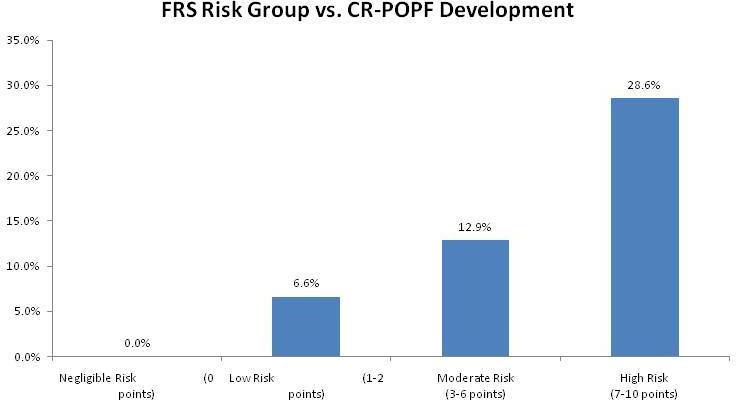
|
 |
Back to Annual Meeting Program
A Multi-Institutional External Validation of the Fistula Risk Score for Pancreaticoduodenectomy
Benjamin C. Miller*1, John D. Christein2, Stephen W. Behrman3, Jeffrey a. Drebin1, Wande B. Pratt4, Mark P. Callery4, Charles M. Vollmer1
1Hospital of the University of Pennsylvania, Philadelphia, PA; 2University of Alabama, Birmingham Medical Center, Birmingham, AL; 3University of Tennessee Health Science Center, Memphis, TN; 4Beth Israel Deaconess Medical Center, Boston, MA
Background: Accurate prediction of postoperative pancreatic fistula (POPF) after pancreaticoduodenectomy (PD) would help tailor optimal intra- and postoperative management of this morbid complication. Distinct risk factors for ISGPF clinically relevant fistulas (CR-POPF), previously identified as small duct size, soft gland texture, high-risk pathology, and increased blood loss, are best discerned intraoperatively. The Fistula Risk Score (FRS), a 10 point scale derived at a single institution, relies on weighted influence of these four variables and has been shown to effectively predict (area under the curve of 0.942) CR-POPF development and its consequences. External validation of this tool would confirm its universal applicability.
Methods: From 2001-2012, 594 PDs with pancreatojejunostomy reconstruction were performed by four pancreatic surgical specialists at three institutions. POPFs, when they occurred, were graded by ISGPF standards as biochemical (Grade A) or clinically relevant (Grades B and C). The FRS was calculated for each patient and clinical outcomes were evaluated across four discrete categories (Negligible Risk, 0 points; Low Risk, 1-2 points; Moderate Risk, 3-6 points; High Risk, 7-10 points). Receiver operator curve analysis was performed to judge model validity.
Results: 142 patients developed any sort of POPF, of which 68 were CR-POPF (11.4% overall: 8.9% Grade B, 2.5% Grade C). There were 21 overall deaths, six of which were directly attributable to pancreatic fistula. Increasing FRS scores (0-10) correlated well with CR-POPF development (p<0.001), with an area under the curve of 0.716. When segregated by FRS risk groups, CR-POPFs occurred in Low, Moderate and High Risk patients 6.6%, 12.9% and 28.6% of the time respectively (figure). Clinical outcomes including complications, length of stay, and readmission rates, also increased across risk groups (table).
Conclusion: This multi-institutional experience confirms the Fistula Risk Score as a valid tool for predicting the development of CR-POPF in patients undergoing pancreaticoduodenectomy. Patients devoid of any risk factors did not develop a CR-POPF, and the rate of CR-POPF approximately doubles with each subsequent risk zone. The lower value of the area under the curve in this analysis is attributable to the decreased rate of CR-POPF observed in the high risk group (29% vs. 89% originally). This difference might be ascribed to variations in operative technique, postoperative management styles, patient characteristics, and a larger sample size in the current study. Despite this, the FRS is validated as an accurate prediction tool, with widespread applicability, which can be readily translated into common practice.
| Risk Profile (model score) | | | variable | Negligible Risk (0 points) | Low Risk (1-2 points) | Moderate Risk (3-6 points) | High Risk (7-10 points) | p-value | | Patients, n (% total) | 63 (10.6) | 166 (27.9) | 302 (50.9) | 63 (10.6) | - | | POPF, n (%) | 1 (1.6) | 19 (11.4) | 90 (29.8) | 32 (50.8) | <.001 | | ISGPF classification, n (%) | | No fistula | 62 (98.4) | 147 (88.6) | 212 (70.2) | 31 (49.2) | <.001 | | Grade A | 1 (1.6) | 8 (4.8) | 51 (16.9) | 14 (22.2) | <.001 | | Grade B | - | 9 (5.4) | 29 (9.6) | 15 (23.8) | <.001 | | Grade C | - | 2 (1.2) | 10 (3.3) | 3 (4.8) | <.001 | | CR-POPF, n (%) | - | 11 (6.6) | 39 (12.9) | 18 (28.6) | <.001 | | Any complication, n (%) | 32 (50.8) | 97 (58.4) | 216 (71.5) | 54 (85.6) | <.001 | | Length of stay, median | 8 | 9 | 10 | 11 | <.001 | | Readmission, n (%) | 10 (15.9) | 24 (14.5) | 51 (16.9) | 21 (33.3) | <.001 |

Back to Annual Meeting Program
|


